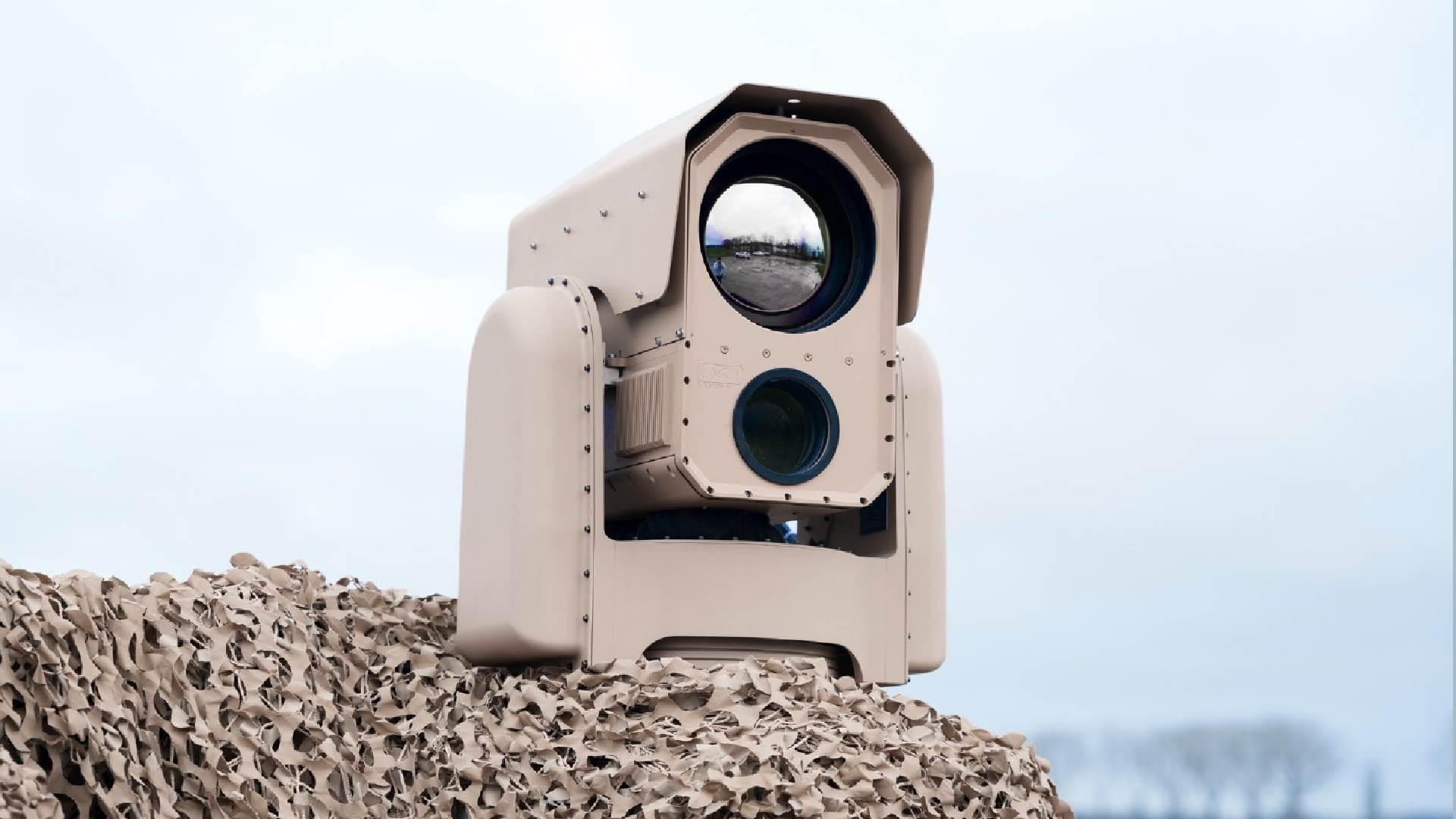Technology
Dubai aims to be a 3D printing hub
Dubai’s active initiatives toward encouraging 3D printing are set to make it the world’s leading destination in this “additive manufacturing” technology, a leading 3D printing expert has said.
His Highness Sheikh Mohammed Bin Rashid Al Maktoum, UAE’s Vice President and Prime Minister and Ruler of Dubai, recently launched the ‘Dubai 3D Printing Strategy’, a unique global initiative that aims to exploit technology for the service of humanity and promote the status of the UAE and Dubai as a leading hub of 3D printing technology by the year 2030. Dubai has also launched the world’s first fully 3D printed office.
Dominic Wright, Business Development Director at Generation 3D, a 3D printing specialist company, said during his presentation at the monthly CIOMajlis session that Dubai’s initiatives toward encouraging 3D printing will revolutionise its construction sector as well as witness major innovations across other sectors particularly medical and oil and gas.
“Dubai has already taken major steps toward using 3D printing, it’s the world’s first to have a 3D Printing strategy and its measures to have clear plans in different sectors have already laid a strong foundation for the further growth of 3D printing across various sectors including construction, oil and gas and medical,” he said during the CIOMajlis session, attended by more than 25 CIOs from different industry sectors including oil and gas, infrastructure, logistics, finance, energy and IT from across the UAE, at Nakheel Headquarters.
Ahmed Al Mulla, Chairman of CIOMajlis, who is also Senior Vice President, Corporate Services at Emirates Global Aluminium, said: “We have already started to see the transformative impact 3D printing is creating. An integration with other technologies opening further wide room for innovation across all sectors and guided by the vision of our leadership, Dubai is set to lead this transformation.”
According to Canalys, a market research firm, the global market for 3-D printers and services will grow from $2.5 billion in 2013 to $16.2 billion in 2018, a CAGR of 45.7 percent.
Factors such as 3D printing evolving from developing prototypes to end-user products, mass customisation, production of complex parts, government investments in 3D printing projects, and improvements in manufacturing efficiency are expected to drive the growth of the 3D printing market, according to another market research, which expects the 3D printing market to reach USD 30.19 Billion by 2022, growing at a CAGR of 28.5 per cent between 2016 and 2022.
“A significant change has already taken place in Dubai with the initiatives by our leadership. Dubai has the most proactive government, which translates into very proactive society. In terms of focusing on 3D printing, I would say Dubai is the best place to be. The government has definitive plans. Dubai in 3D printing will be one of the biggest players in the market- everything whether it is market for 3D printers, companies who use the technology,” said Wright.
The major benefits of 3D printing, explained Wright, come in the way of cost saving, design flexibility and time effectiveness.
“You are not constrained to old methods, you can build shapes and designs that did not seem possible earlier. All you need to have is the design, in the right scenario, you can build something in one-tenth of the time and save even up to 80 per cent in costs especially because you save a lot in terms of set up costs involved in manufacturing,” he added.
Companies need to start looking where it can be integrated and whether it is going to be relevant to their industry. Don’t fall behind and let this pass you by but also don’t use it where it’s not necessary.
Among the challenges the industry in Dubai needs to be prepared for are technical support and availability of skilled manpower in this new industry.
Talking about the shift in the nature of employment, he said: “There will be a higher demand for 3D designers, 3D engineers, 3d printing engineers, hardware engineers. People in the related industries should keep themselves updated,” recommends Wright.
Ahmad Al Ahmad CIO of Nakheel, said: “Dubai already has a robust construction sector. Being a frontrunner in using 3D printing for buildings, will further take Dubai ahead of other markets in this sector and set an example globally for others.”
Tech News
ATERMES and IEC secure Landmark Contract to Deploy AI-Powered Bird Repelling System at Lahore Airport

ATERMES, a French leader in advanced surveillance and security solutions, announces in partnership with The Imperial Electric Company (IEC), the award of a major contract by the Pakistan Airports Authority (PAA) for the deployment of a state-of-the-art Bird Repelling System (BRS) at Lahore International Airport.
This milestone project represents a first-of-its-kind integrated solution combining SURICATE, ATERMES’ advanced AI-enabled multi-sensor surveillance system, with acoustic and laser deterrence technologies. The system delivers a fully automated, intelligent, and environmentally friendly approach to mitigating bird-strike risks; one of aviation’s most persistent safety challenges.
The SURICATE system, developed by ATERMES in France, brings together cutting-edge optronics, embedded AI, and edge computing to continuously monitor airfields, identify potential avian threats in real time, and automatically activate deterrence mechanisms.
Once a bird threat is detected by the system’s deep-learning algorithms, SURICATE autonomously triggers the surrounding acoustic and laser repellers, driving the birds away from critical flight zones such as runways and taxiways.
This unique synergy between AI-based detection and automated multi-modal deterrence marks a turning point in airport security and environmental protection. Unlike traditional manual or time-based repelling systems, the BRS for Lahore Airport operates only when necessary, optimizing energy use and minimizing disturbance to the surrounding ecosystem.
Lionel Thomas, Chairman of ATERMES, stated: “This project is not just about technology; it’s about redefining how airports ensure safety through intelligence. By merging AI, optics, and deterrence, we’re transforming bird control into a predictive, autonomous, and eco-responsible process.”
Sajid Jamal, Executive Director of The Imperial Electric Company, added: “Our partnership with ATERMES reflects Pakistan’s growing commitment to embracing advanced, AI-driven safety systems. Lahore will become the first airport in the region equipped with such an integrated and intelligent Bird Repelling System.”
The project underscores a strong collaboration between France and Pakistan in technological innovation. ATERMES will provide the detection and control systems, while IEC, a key player in Pakistan’s engineering and infrastructure sectors, will oversee integration, installation, and local support. Together, they will ensure the delivery of a robust, scalable, and sustainable system that sets a benchmark for other international airports in the region.
Tech Features
THE RISE OF THE AUTONOMOUS ECONOMY: A 2025 RETROSPECTIVE FROM THE MIDDLE EAST

Kayvan Karim, Assistant Professor at School of Mathematical and Computer Sciences, Heriot-Watt University Dubai
The year 2025 will likely be remembered as the moment the global economy stopped simply automating tasks and started handing over the keys to autonomous agents. For decades, the promise of automation was simple: machines doing repetitive work faster than humans. But the last twelve months have ushered in a fundamental paradigm shift. We have moved from the era of static scripts to the age of “Agentic AI”, systems that don’t just follow orders but perceive, reason, and act to achieve complex goals.
In their 2025 Technology Trends report, Accenture’s analysts have termed the explosion of these capabilities as “The Binary Big Bang”. As generative AI becomes central to enterprise technology, the cost of development has plummeted, leading to a proliferation of new systems where digital agents act autonomously. These systems have given rise to Agentic AI, which acts as a proactive partner rather than a passive interface. These agents are now capable of “Superagency,” a collaboration architecture that orchestrates multi-agent systems to handle complex workflows that require specialised knowledge across different domains.
This shift is nowhere more palpable than in the Middle East. From the giga-projects of Saudi Arabia to the smart logistics hubs of Dubai, the region is leveraging this technological inflection point to decouple its economic future from hydrocarbons and rebuild it on a foundation of silicon and code.
The Economics of Intelligence
The catalyst for this revolution is a dramatic collapse in the cost of cognitive labour. When examining the economics of intelligence, Stanford University reported in its 2025 AI Index Report that the catalyst for this explosion in autonomy is the radical democratisation of computing power. Between late 2022 and late 2024, the inference cost for a system performing at the level of GPT-3.5 dropped over 280-fold. This trend accelerated through 2025, with hardware costs declining by approximately 30% annually and energy efficiency improving by 40% each year.
These economic shifts have lowered the barriers to entry, moving advanced AI from the realm of massive research labs to the operational budgets of mid-sized enterprises. As Menlo Ventures noted in their mid-year update, enterprise spending on model APIs more than doubled to $8.4 billion in the first half of 2025 alone, signalling a decisive shift from experimental “training” budgets to production-grade “inference” budgets.
The Middle East’s Sovereign Pivot
In the Gulf Cooperation Council (GCC), this technological wave is being ridden with strategic intent. The region is not content to merely import Western or Eastern models; it is building its own “Sovereign AI.”
In the UAE, the Technology Innovation Institute (TII) has continued to push boundaries with its Falcon series. As highlighted by ITU in 2025, the Falcon LLM has evolved into a multi-modal framework capable of processing vision and audio, enabling it to interpret complex documents and charts locally without data leaving the country. Similarly, G42’s Inception has solidified Jais’s position as the world’s premier Arabic-centric model. By integrating Jais into the Microsoft Azure Model Catalogue, they have provided generative AI access to over 400 million Arabic speakers, ensuring that the nuances of the region’s language and culture are preserved in the digital age.
Saudi Arabia has matched this ambition with the launch of Humain, a PIF-backed AI champion. According to Reuters reports from late 2025, Humain is not only building massive data centre capacity but is also developing a voice-first operating system designed to replace traditional icon-based interfaces. This aligns with the Kingdom’s broader Vision 2030 goals, where AI is expected to contribute over $135 billion to the economy.
From Automation to Autonomy in Industry
The distinction between “automation” (following rules) and “autonomy” (making decisions) is best illustrated in the region’s critical infrastructure.
In the energy sector, Saudi Aramco and Yokogawa achieved a historic milestone at the Fadhili Gas Plant. As reported by Oilfield Technology, they successfully deployed autonomous control AI agents that utilise reinforcement learning to optimise the Acid Gas Removal unit actively. Unlike traditional systems, these agents adapt to changing environmental conditions without human intervention, reducing chemical and steam consumption by up to 15%.
Similarly, ADNOC partnered with G42 and Microsoft to launch “EnergyAI.” This agentic system automates complex tasks such as seismic analysis and geological modelling, compressing workflows that used to take months into mere days.
In logistics, the shift is physical. DP World has revolutionised container handling at Jebel Ali with the BoxBay system. As described by Marine Insight, this high-bay storage technology stacks containers up to 11 tiers high in a steel rack, allowing fully automated cranes to access any container without having to reshuffle others. This change increases terminal capacity by 300% and creates a safer, more efficient operating environment.
The GenAI Divide: Enterprises vs. SMEs
While giants like Aramco and DP World forge ahead, the picture for Small and Medium Enterprises (SMEs) is more complex. Project NANDA’s 2025 research highlights a “GenAI Divide,” revealing that while 95% of organisations are investing in AI, only 5% are extracting significant value.
For SMEs, the barriers are talent and infrastructure. However, the rise of Low-Code/No-Code platforms is providing a bridge. As reported by Gulf News, Zoho has seen 50% growth in the region, driven by businesses modernising legacy systems without the need for expensive engineering teams.
To further support this sector, the Saudi SME Bank launched Phase II of its Agency Model in 2025. By partnering with crowdfunding platforms like Manafa and Lendo, they have allocated SAR 240 million specifically to finance SME growth and digital transformation.
The Future of Work: A Divergent Path
The impact on the job market is profound. The World Economic Forum’s “Future of Jobs 2025” report predicts a divergent effect: while routine roles in administration and manual labour are declining, demand for AI and big data specialists is surging.
In the GCC, this dynamic intersects with nationalisation agendas. Governments are using AI to solve the skills mismatch. The Massar Al Ghurair platform, launched in the UAE in 2025, uses AI algorithms to match Emirati youth with career paths and upskilling opportunities. By automating career counselling and recruitment, the region aims to replace low-skilled expatriate labour with high-skilled local talent.
Looking Ahead to 2026
As we look toward 2026, the focus will shift from adoption to governance and integration. Gartner forecasts that IT spending in the MENA region will reach $169 billion in 2026, an 8.9% increase mainly driven by AI infrastructure.
We can expect the realisation of “Cognitive Cities.” In Saudi Arabia, NEOM is moving from earthworks to deploying a cognitive operating system that predicts resident needs. Meanwhile, Dubai’s Cashless Strategy aims to have 90% of all transactions be digital by 2026, creating a data-rich environment for further autonomous innovation.
The year 2025 was the year the machines started to think. The year 2026 will be the year we learn to live and work alongside them.
Tech Features
Why 92% of People Never Achieve Their Dreams — And How AI Can Help Change That

Artificial intelligence is emerging as an unexpected ally in one of humanity’s oldest struggles: turning dreams into reality. After years spent working with thousands of entrepreneurs, corporates, startups, and students, individuals standing at every possible crossroad of ambition, uncertainty, and reinvention, a pattern has surfaced with striking consistency. Most people are not held back by the size of their dreams. They are held back by the psychological distance between who they are today and who they hope to become. AI, with its growing ability to illuminate patterns, reduce overwhelm, and bring the future self-closer, is beginning to reshape this fundamental human challenge.
Across conversations in boardrooms, incubators, classrooms and quiet mentoring sessions, this distance appears in countless forms. A bright student maps out a compelling future but loses momentum within days. A corporate leader imagines a more meaningful life but finds the path too overwhelming. An entrepreneur gains clarity but cannot sustain action long enough to see results. Ambition is abundant. Follow through remains elusive.

Founder and CEO, Unlimits
The research behind this is both revealing and deeply human. Studies from UCLA, Stanford and other behavioral laboratories demonstrate that individuals act more consistently when they feel emotionally connected to their future self. Yet most people experience that version of themselves not as an extension of who they are, but as a stranger, someone they hope to meet one day but rarely feel responsible for today. As behavioral economists often explain, we don’t make sacrifices for strangers. And so the dream, however sincere, slips into the long grass of “someday. “This explains why nearly 92% of people fail to achieve the goals they set each year. Dreams are not the problem. The disconnect is.
People blame discipline or lack of motivation, but the truth is simpler. The human mind is wired to favor the familiar. The comfort zone, often demonised, is really just biology trying to protect us from the uncertain. Yet underneath those instincts lies an innate desire for growth, a longing to expand, to evolve, to become the person one senses they could be.
For years, the missing ingredient was structural support. A vision, no matter how inspiring, cannot survive without a scaffold. People needed a way to break overwhelming goals into manageable steps. They needed reflection, accountability, and a rhythm that kept intention alive long enough for identity to shift. Most never had access to that level of support. This is where AI has quietly begun altering the landscape of human development.
In recent global surveys, nearly 40% of people expressed willingness to use AI for emotional clarity, self-reflection, and goal-setting. The World Health Organization launched pilot programmes using conversational AI to support mental wellness in regions with limited resources. Early research across Stanford and MIT shows that AI-assisted coaching improves consistency, habit adherence, and long-term follow through. The reason is not complicated. AI offers something the human mind struggles to maintain: clarity without fatigue.
It notices emotional cycles, the midweek dip, the avoidance that follows stressful meetings, the patterns that appear but go unrecognised. It highlights the small behaviours that shape larger outcomes. It breaks down a daunting dream into a sequence of steps simple enough to act on. And it does this with presence, available at the precise moment a person needs support, rather than during a weekly appointment.
What emerges is a new kind of ecosystem. The integration of AI into mobile technology has made tools for self-improvement astonishingly accessible. Personalised guidance, once available only to those who could afford coaching or therapy, now exists in people’s pockets. It is immediate, responsive, and deeply personal. This accessibility represents the democratisation of personal transformation, a shift as meaningful as AI’s impact on coding, business building, or creative work.
Yet AI alone is not the solution. Its impact is most profound when it works alongside the wisdom of coaching, the emotional insight of reflection, and a clear vision of one’s future self. When these elements converge, something remarkable happens: people stop dreaming abstractly and begin acting concretely. They replace “someday” with “today.” The future stops feeling distant. Action becomes less of a battle and more of a natural extension of identity.
This convergence of psychology, coaching and intelligent technology represents one of the most significant shifts in human development in decades. It finally offers a way to bridge the space between intention and behaviour, a gap that has defeated generations of dreamers.
If most people never achieve their dreams, it is not because those dreams are unreachable. It is because the scaffolding required to turn dreams into daily behaviour has been missing.
But that is beginning to change.
With the right structure, the right clarity, and the right support, both human and technological, more people can finally walk into the future they have imagined for far too long. The promise of AI is not that it will change who we are, but that it may help us become who we were always capable of being.
-

 Tech News1 year ago
Tech News1 year agoDenodo Bolsters Executive Team by Hiring Christophe Culine as its Chief Revenue Officer
-

 VAR8 months ago
VAR8 months agoMicrosoft Launches New Surface Copilot+ PCs for Business
-

 Tech Interviews2 years ago
Tech Interviews2 years agoNavigating the Cybersecurity Landscape in Hybrid Work Environments
-

 Tech News5 months ago
Tech News5 months agoNothing Launches flagship Nothing Phone (3) and Headphone (1) in theme with the Iconic Museum of the Future in Dubai
-

 Tech News2 years ago
Tech News2 years agoBrighton College Abu Dhabi and Brighton College Al Ain Donate 954 IT Devices in Support of ‘Donate Your Own Device’ Campaign
-

 Editorial1 year ago
Editorial1 year agoCelebrating UAE National Day: A Legacy of Leadership and Technological Innovation
-

 VAR1 year ago
VAR1 year agoSamsung Galaxy Z Fold6 vs Google Pixel 9 Pro Fold: Clash Of The Folding Phenoms
-

 Cover Story9 months ago
Cover Story9 months agoUnifonic Leading the Future of AI-Driven Customer Engagement

























